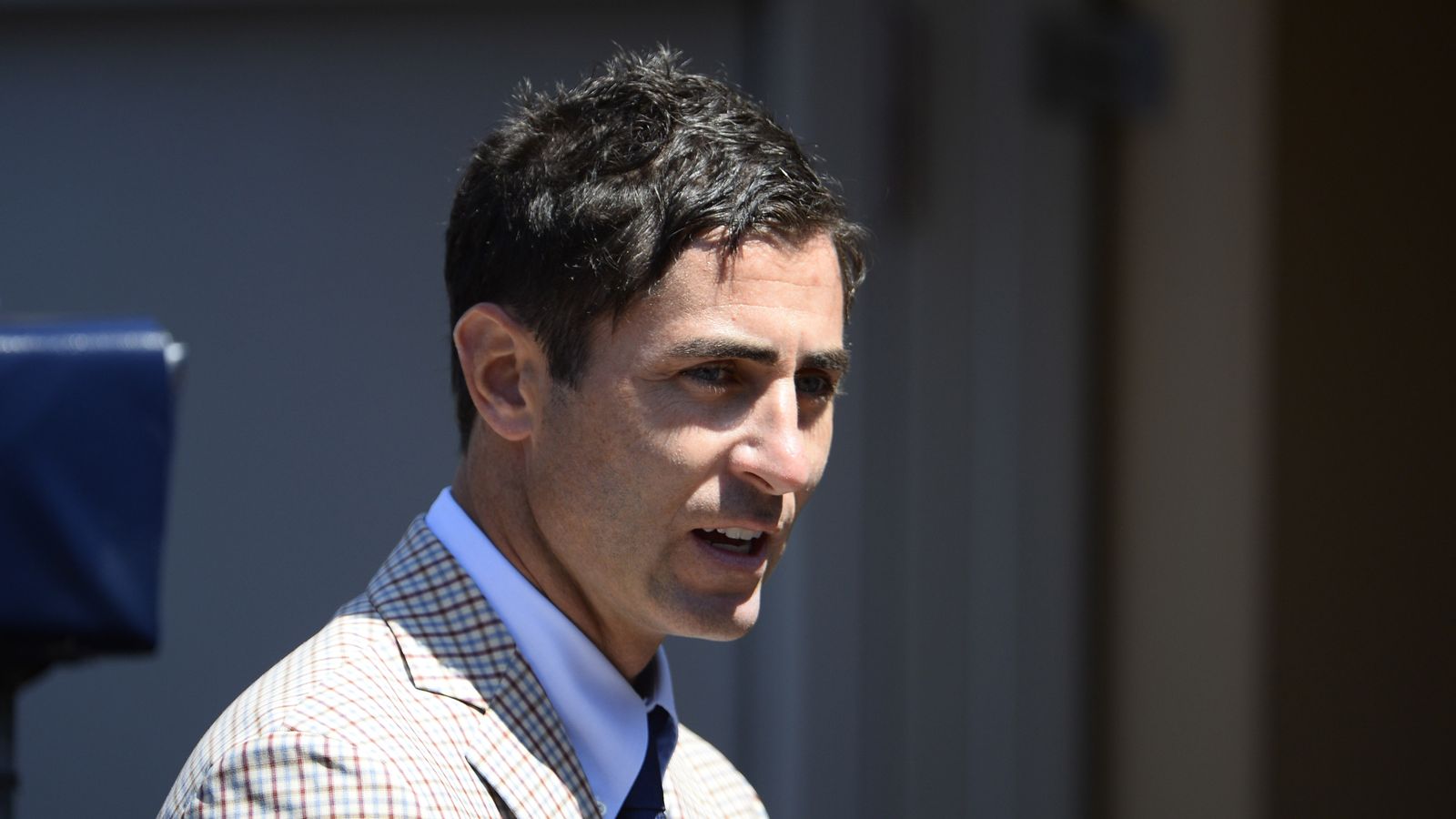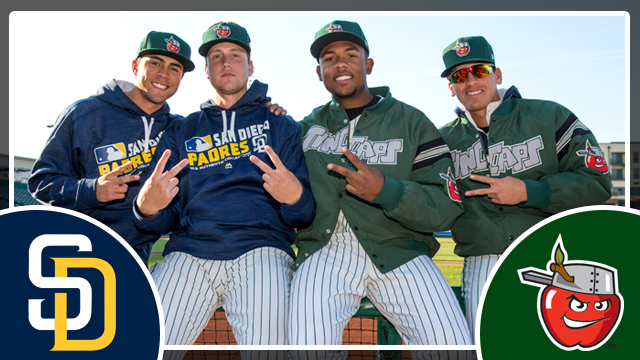Comparing The Padres Current Rebuild With The Cubs, Mets, & Astros

Credit: Getty Images

Pre-Rebuild Futility:
Almost all rebuilds begin with a new regime in place in the front office, and the Padres are no different. Josh Byrnes was fired in 2014 after two years on the job, and A.J. Preller was brought in from the Texas Rangers. He came with a noted specialty in international scouting to hopefully turn the Padres around after years of futility.
Having never won a championship since their MLB debut in 1969, and not making the playoffs since 2007, many fans were looking for a reason for hope. Well, Preller didn’t wait for a moment in re-energizing the fan base, acquiring many proven stars through trades and free agency, making the Padres a dark horse contender for 2015.
Alas, that horse didn’t go anywhere as the Padres ended up with a worse record than the year before, finishing 74-88, and prompting the beginning of a rebuild. As of 2017, the Padres are tied for the fourth longest championship drought in the MLB, only behind the A.L. pennant winners Cleveland Indians, Preller’s former employers, the Texas Rangers, and the Houston Astros.
So one thing the Cubs, Mets, Astros, and the Padres all have in common is they each had championship droughts upwards of 25 years at the beginning of their rebuilds. Each brought in a new general manager to guide them to the promised land. Theo Epstein, Sandy Alderson, and Jeff Lunhow, respectively, all suddenly became the leaders the fans pinned their hopes on. Epstein had already brought the Curse of the Bambino to an end with the Boston Red Sox in 2004, and Chicago fans wanted a repeat of his magic. They did not have to wait long.
Rebuild Strategy:
When Preller began his rebuild, he had a lot of veteran pieces to trade to contending teams for prospects. And trade them he did, as he traded away all his expensive veterans like Matt Kemp, Melvin Upton Jr. James Shields, Craig Kimbrel, Jedd Gyorko (not exactly a vet, but was locked up long-term), Drew Pomeranz, Derek Norris, Andrew Cashner, Nick Vincent, and Joaquin Benoit in exchange for prospects (or in the case of Kemp and Gyorko, getting out their contracts). While none of three aforementioned teams were able to dump as many veterans in that short a time as the Padres did, they all employed similar strategies.
The Cubs most notable case is their trade with our very own San Diego Padres in acquiring Anthony Rizzo for Andrew Cashner. Both players were expendable; in Rizzo’s case, Yonder Alonso had just been acquired to become the first baseman of the future, and the Cubs were unsure of whether or not Cashner would stick in the rotation. While in hindsight it’s obvious the Padres should have kept Rizzo, it is also very easy to forget that both Cashner and Alonso were both very highly rated prospects at the time, and Rizzo struggled mightily in his first crack at the majors.
If the Padres didn’t have Alonso, they wouldn’t have Pomeranz, who would turn into teen phenom Anderson Espinoza this past summer. Not to be left out, the Mets also struck a deal that altered their franchise in a massive way. The 2012 deal involving knuckleballer R.A. Dickey was at the time viewed as a steal for the Blue Jays, having to only give up highly touted catching prospect Travis d’Arnaud and pitching prospect Noah Syndergaard, an afterthought compared to the main catch d’Arnaud. Look how that has turned out for both teams; Syndergaard is the ace of one of the best rotations in the league, while d’Arnaud has done alright for himself, but is no star. Hopefully one of Margot, Espinoza, Allen, Naylor, or any other prospect/s become the next Syndergaard or Rizzo.
Draft/Intl. FA’s:
In his two amateur drafts with the Padres so far, A.J. Preller has shown a preference for picking pitchers. Four of his first six picks in 2015 were starting pitchers, as were 10 of his first 12 selections in the 2016 draft. With no obvious preference for handedness, it seems he just likes to pick the best available arm, which is good news for a team that could have the worst starting rotation in the majors, with their ace being either Clayton Richard, Jhoulys Chacin, Trevor Cahill or Luis Perdomo. None of them are getting compared to the likes of Sandy Koufax or Tom Seaver.
So back to the amateurs, first rounders Lauer and Quantrill join 2015 second rounder Austin Smith and third rounder Jacob Nix as potential future rotation mates. Despite Smith’s and Nix’s slow start to their pro careers, hopes are still high for both talented hurlers. On the other hand, international signings have leaned more towards the positional side, with outfielder Jorge Ona and shortstop Luis Almanzar becoming new Friars during the 2016 international free agent signing period. Preller hasn’t forgotten pitching entirely, as he nabbed lefty Adrian Morejon for an astounding $11 million.
The Cubs and the Astros most heavily relied on the draft and international spending to turn their team around, as the Astros had three consecutive number 1 overall picks from 2012-2014, as well as two top five picks in 2015 that nabbed them Carlos Correa, Alex Bregman, and Preston Tucker (Mark Appel netted them Ken Giles, and Brady Aiken was not signed). Internationally, they nabbed Jose Altuve, who led the American League in hits for the third straight year and got a third place finish in MVP voting this year.
Overview
So, these three teams show that a successful rebuild can work. It can provide a stable foundation of young talent that could easily lead to years of contention for the Friars. However, a fair warning that rebuilding doesn’t always work, as the Minnesota Twins have spent part of the last decade rebuilding. Getting young talent like Byron Buxton and Miguel Sano has not helped them in the wins column. After a surprising run at contention last year and falling short, they finished with the worst record in the majors in 2016, and former top prospect Buxton has struggled mightily in his limited MLB action. Things don’t look bright for the Twins, despite going through an arduous rebuild process. There are risks involved.
The Padres are doing it right. They have embraced the philosophy of acquiring dozens of talented players at multiple positions. It will take time though, as the majority of their talent is still in the lower levels of the system. In a few years, the Padres hope to be mentioned on the list of successful rebuilt teams. Only time will tell if they can earn that honor that we give the Mets, Cubs and Astros.
Kent is high school student, and is the youngest writer at East Village Times. He plays baseball, and runs cross country. He is also a Life Scout currently working towards the rank of Eagle. He was born in San Diego, and been a Padres fan ever since.
Let’s relax on Turners prowess at SS until he plays more than 2 games at the ML level and puts in a full season with pitchers adjusting. Trumbo isn’t playing gold glove caliber defense everyday at 1B while stealing you 25+ bags. Plus Wil is 5 years younger under control for the prime 6 yrs of his career. Lets also not forget two pitchers came with Wil and both are young and could still devlope.
Sorry but Sandy Anderson had his crack at the Pads and his record is nothing to model. The Padres right now are more built on the Cubs model but missed opportunities with Ross, Upton and Norris when Dee wouldn’t let them blow it all up at the 15 trade deadline. If they get a top three pick in 17 and 18 you can draw more parallels to the Astros. Both clubs spent heavy on free agents when the time came to compete. It still remains a mystery if the Seidlers will follow suit in 2019.. Neither the Mets, Astros, or Cubs had as poor of a record of drafting and developing talent or an ML roster so void of talent to start their build. The Pads were in much worse shape to start.
With that said, it’s never been more interesting to watch who will step up.
I love the angles that Preller is taking. Ya, outside of Turner he didn’t give up anyone major to take a shot with a “win now” mentality. It would be great to still have Turner and Maybe Joe Ross? But it’s its hard to not be excited that the trade brought us Myers! Once he realized it wasn’t going to work, he quickly shifted gears and went full rebuild. The talent he’s acquiring is solid, high impact type players. Mix those guys in, when MLB ready with a few impact, proven free agents to round out roster. That sounds like a winner on the field with depth on the farm! I’m as excited as ever to be a Friars fan!
Turner, by himself, is twice the player Wil Myers is. The Orioles just signed Mark Trumbo, a better hitter and also a 1B/OF, for middle reliever money. Turner, on the hand, looks like he can play plus defense at shortstop while hitting .300 with power and also stealing 50 bases. As a Mets fan, I couldn’t be angrier at how bad that trade went because the Nats got so much better whereas the Padres got worse. No Padres fan can say with a straight face they’d rather have Wil Myers over Joe Ross and Trea Turner.
Straight face
I rather have Myers over Ross
The question is how dafq did Tampa not get turner and Ross
Great write up! I would argue that the rebuild started with the 2015 craziness. AJ came in assessed the farm system and saw a system that was very deep (if you recall the main reason is was highly regarded) but lacked serious impact talent. It had a lot of good but not great prospects outside of maybe trea turner. He used that depth to reshuffle it into major league “talent”. This not only was a strip down to build the farm system he wanted but also sparked interest and excitement around a team that had been for too long boring. The prospects he replaced the system with have a ceiling that we have not really ever seen in padres history. Not all of them will work out but it is really refreshing to see our team go after prospects that have potential to be all world rather than just big leaguers.
This kid knows his stuff, and can write! Let’s hear more from him.
Great job Kent!
What’s left to be seen is the Padres ability to develop the talent the have. They have a history of trading minor league players away who become successful elsewhere.
Andy Green is still a big question mark for me as well.
Nice piece, I enjoyed it!